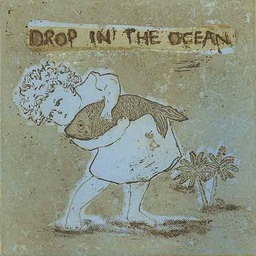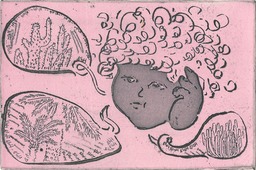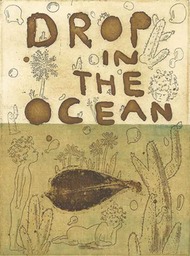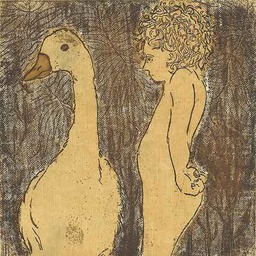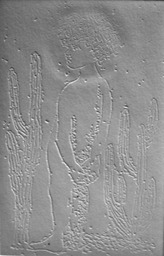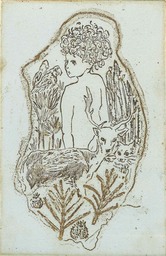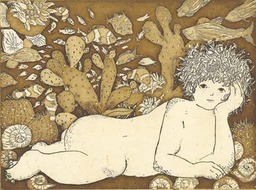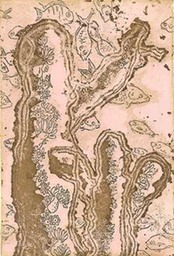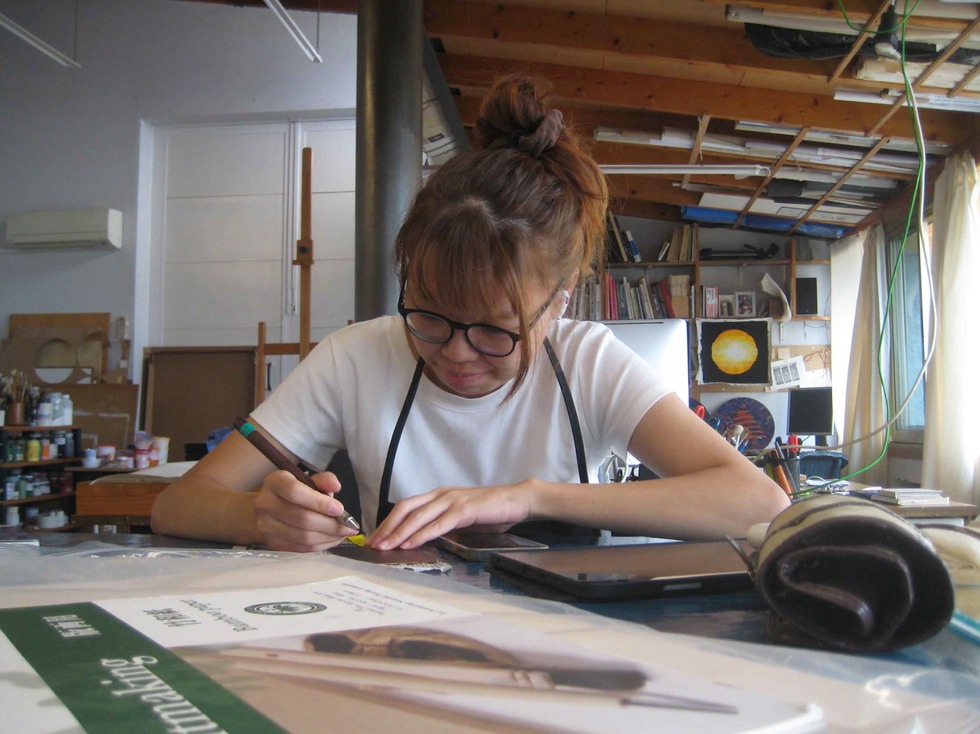
Quirina Wang (China 1997) is the second young artist to receive a grant this year for our electro-etching workshop-residency. The truth is that when there are artists who apply to come from Australia, where Jack Lanagan and Alana Wilson came from, I always find it impressive that they come from so far away to our workshop-residency, but when I received Quirina Wang's application, it seemed even more extraordinary to me. Not only because of the distance from, but also because of her origins -from China! they are interested in what is practised in this workshop in Gran Canaria, electro-etching that minimizes the risk to the both the printmaker and the environment.
Although this artist is very young, she has quite a bit of experience. In fact, she celebrated her birthday during her stay at the residency. Quirina graduated in 2019 from the Guangzhou Fine Arts Academy (China). She is an illustrator and printmaker who obtained a Master's in Illustration and Book Arts from Anglia Ruskin University (UK). After moving to London for two years, she dedicated her time to developing her printing projects at Thame-side Printmaking Studio. During her stay in England, she also held numerous group exhibitions.
She never stopped working in our workshop, she was completely immersed in her learning and very inspired by the nature of the place, and even our four-year-old granddaughter Suria, who visited her often, inspired her to create very tender childish images, combined with plants of our garden and some animals she saw on a trip she made with us to a place for rescued animals. There is no doubt about her oriental style.
She practised drawing on hard ground, on graphite ink and Big etching resists. She also used open-bite electrotint (aquatint without rosin) or with graphite ink and Big, both very versatile varnishes and excellent for etching with electrolysis. She also worked with soft and left ground. She did semi-dry electro-etching for tonal areas and she was very interested in galvanised lines.
It should be noted that in addition to the copper plates, she brought some yellowish metal plates, obviously not copper, according to the seller they were, but she and I agreed that they were not; in my opinion it is brass, perhaps with a little more copper than normal brass. But I was determined to experiment with this metal. In order not to contaminate the electrolyte (copper sulphate) in the main tank, I prepared a small flat tank with a lower concentration than the one I usually use. We handled these plates with the same techniques as for copper or zinc. Surprisingly, it e-etched very well and the electrolyte is not noticeably altered.
I think Quirina Wang is leaving with eagerness and the knowledge to continue working with electro-etching in the future in Guangzhou.

Copper plate on the left, brass plate in the center, small flat tank with a stainless steel grid cathode on the right.
Pictures from the workshop
Quirina Wang speaks about her experience in the workshop-residency
我长久以来怀揣着参与版画驻地项目的热望,幸运的是,去年申请了这次 non-toxic electro etching workshop 驻地。在新颖且环保的方法面前,我愈加渴望探索更加安全、环保的创作方式。我认识到,即便是相同的技法,在不同的地区文化环境下会有不一样的展示效果。各地区艺术家使用不同的材料对同一技法的演绎各具特色,这种文化碰撞与交流令我倍感兴奋与启迪。
自去年提交驻地申请以来,我满怀期待地规划着这场跨越千里的旅程。经过十几个小时的飞行,当我踏上了充满异域风情的西班牙土地,一切都显得如此新奇迷人。在这里,我遇到了Alfonso 和 Amparo,他们温暖友善,突破我们之间语言上存在障碍。他们的家人,尤其是可爱的孙女孙子 Nehru 和 Suria,更为我的创作之旅增添了无尽的乐趣与灵感。
工作室的版画体验令我被受到启发。我惊叹于电流如何替代传统的蚀刻方式展现出全新的艺术效果。semidry、galvansing,big etching ground 每一次尝试都充满了惊喜与乐趣。这段经历将成为我艺术生涯中的宝贵财富。我期待着回到中国后,将这份收获转化为更多的创作灵感,继续探索版画艺术的无限可能。
------------------------------------ English translation by Quirina Wang --------------------------------------
For a long time, I've had a strong desire to participate in a printmaking residency. Last year, I was fortunate enough to be accepted into the non-toxic electro etching workshop residency. Encountering this innovative and eco-friendly technique only deepened my commitment to exploring safer and more sustainable methods of art-making. I came to understand that even when using the same technique, the cultural and regional context can significantly influence the outcome. Artists from different places bring unique interpretations to the same methods through the use of diverse materials, and this exchange of cultures and ideas fills me with excitement and inspiration.
Since submitting my application, I had been eagerly planning this journey across continents. After several hours of flight, I finally arrived in Spain, where everything felt fresh and captivating. There, I met Alfonso and Amparo, whose warmth and friendliness made the language barrier insignificant. Their genuine hospitality, along with the charm of their adorable grandchildren, Nehru and Suria, added immense joy and inspiration to my creative journey.
The printmaking experience in the studio was truly eye-opening. I was amazed at how electrical currents could ingeniously replace traditional etching techniques, creating entirely new artistic effects. Each experiment, whether with semidry, galvanizing, or big etching ground, was filled with surprises and delight. I know this experience will be a valuable asset in my artistic career. I’m excited to return to China and turn these experiences into new creative inspirations, continuing my exploration of the endless possibilities in printmaking art.
Quirina Wang's electro-etchings

